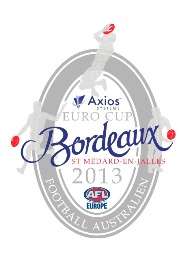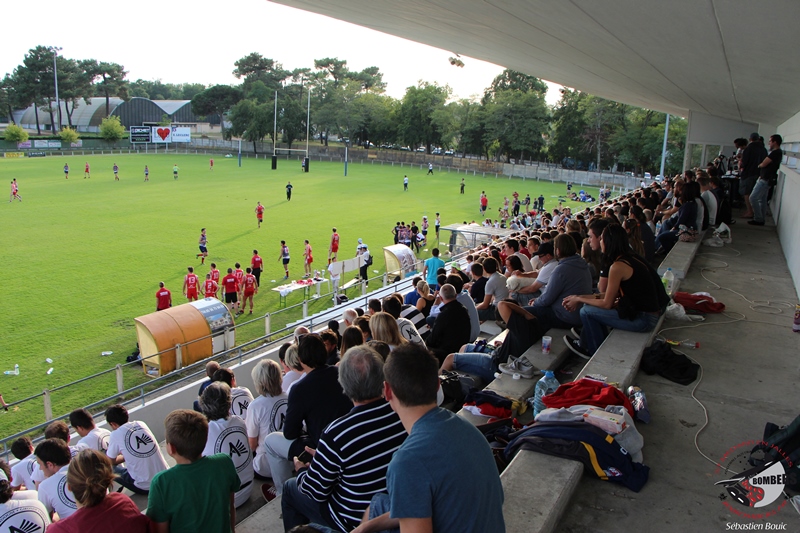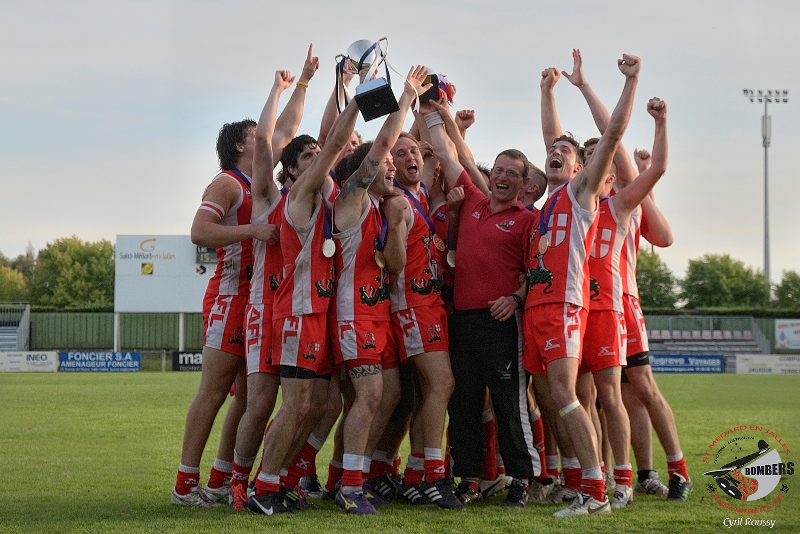Afterglow – A look back at the Axios Euro Cup in Bordeaux, 2013 (Part 1)
- Wednesday, October 23 2013 @ 06:07 pm ACDT
- Contributed by: Wesley Hull
- Views: 3,410

 This is the first in a series of questions and answers discussing the recent Euro Cup in France. The three articles will take a look at different aspects of the event. Alban Schieber and Frederic Zohar worked tirelessly with their team to put together the event. In the afterglow of the event, here is their take on what the Euro Cup was, how it came together and how successful it was. These answers are provided by Alban Schieber, unless otherwise indicated.
This is the first in a series of questions and answers discussing the recent Euro Cup in France. The three articles will take a look at different aspects of the event. Alban Schieber and Frederic Zohar worked tirelessly with their team to put together the event. In the afterglow of the event, here is their take on what the Euro Cup was, how it came together and how successful it was. These answers are provided by Alban Schieber, unless otherwise indicated.
How many teams and from what countries?
“There were 14 teams in total from 12 different European countries. Unlike the previous events, most of the teams came from the continent. (Norway, Finland, France, Spain, Italy, Austria, Croatia, Cataluña, Iceland, Ireland, England and Crusaders).”
“England won their third Euro Cup defeating France in the Grand Final 92 – 15 while in the women game the Crusaders defeated France and won their first title. “
How many players or participants were there in total?
“We had in around 320 players in Bordeaux, comprised of 280 boys and 40 girls.”

What was the format for the competition?
“During the morning we had the seeding round. Groups were made with a favourite and two challengers. The base for the games was two 15 minute quarters. The only favourite who lost in the morning was Ireland, defeated 34 - 33 by France.”
“At lunch time each team had a break of an hour and a half to rest or have a look at the women’s game, whichFrance lost to the Crusaders 26 - 45.”
“In the afternoon, we had the classification games and the finals. The games were two half of 20 minutes. The plate winner was Austria who won their first game in the competition. Ireland was the bowl champion. England, France and Croatia were on the podium.”
For anyone unfamiliar with the tournament, how many matches and how long each match is played?
“There were 25 games, 12 of them were made of two halves of 15 minutes and 12 were made of two halves of 20 minutes. The last one was the women’s game made of four 20 minutes quarters.”
How many Australians are involved?
“The only Australians involved were umpires or members of the AFL Europe committee. No Australians were allowed to play with the national teams.”
How did you promote the event on the day?
“To promote the event we had over 2 500 posters and 8 000 flyers given in all the local shops in Bordeaux and Saint Médard en Jalles. We also had bigger posters in Saint Médard en Jalles set up by the city council. Finally we had a few articles in the press thanks to our press release sent all over the sport media a few months before the event. We even hit Youtube with a fun clip to generate interest.”
What were your overall impressions of the event, was it a success?
Frederic Zohar (co-organizer and president of the Bordeaux Bombers):
“It was a success because everybody was where they were supposed to be at the right time. We had over 100 volunteers on the day and it was crucial that everyone knew what they had to do and that they were autonomous.
During the day, when we had everything on track, I felt on the top of the world.”
Alban Schieber: “After three weeks of rain we had a really nice weather on the day which was great to get some crowds over. We believe that there were 1 200 people, unrelated to footy, who watched the Grand Final. The biggest success was to see everybody with a smile on their faces. I had tears in my eyes when I saw the crowd during the final cheering and laughing.
On the next day we received text messages from many coaches and captains saying that it was the best Euro Cup organized so far. Which made both Frederic and I really proud.”
What were the biggest successes of the tournament?
Frederic Zohar : “There are two major success in this tournament: the first one is a sport success with the French team getting to the Grand Final (best performance ever) and the organization of a French women’s footy team ; the second success is that thanks to the city council we had a great venue with four real ovals and posts which gave us the best venue the Euro Cup ever had !”
What were the drawbacks or areas that could have been better?
Frederic Zohar : “The only missing thing from a media point of view was TV. Unfortunately no TV journalists showed up. Apart from that we had some issues with the protocol as some of the presentations didn’t go with the scheduled time. Last thing was we were hoping for more sponsors. The overall budget on the day was 76 000 €. With more sponsors we could have ensured wider media coverage and a better promotion of the game.”
“Looking back, it was the first time we organized such an event and we had some things we could have done earlier to prevent the last week of hard work under pressure.”
What kind of sponsorship/support did you have?
“On one hand, we had about 10 000 € sponsors in cash. Most of them were local and the two major ones were l’Ombrière, a vegetable farm, and the Regional council. On the other hand, we had loads of sponsors exchanging merchandise or staff members for advertisements. For example, we had security and physiotherapists for free.”
How many volunteers and what did they do?
“We had about 100 volunteers on the day. Most of them were doing the boundary and goal umpiring or working in the bars. But we also had volunteers welcoming the crowd, taking pictures, co-ordinating the food services, recording the game to have a full streaming coverage of ground 1 and taking care of the teams. All of them were professionals coming as volunteers on the day. It was definitively a great day thanks to all of them. The Bordeaux Bombers, our local club, was looking after the logistic and had a really tough day.”
How much local business support?
“The whole budget was secured thanks to local businesses or institutions. The budget of 76 000€ came from Bordeaux’ businesses and institutions or from the revenue raised on the day.”
What level of international support did you receive?
Frederic Zohar: “Our ambassador in Australia, Daniel Jackson, couldn’t come on the day as he was playing in the AFL finals the weekend before. But he sent us a jumper signed by the whole Richmond Tigers team for the raffle we organized. We also had our brother club the Boxwood Hills Football Club on site which was a great way for me to thank them. “
What level of support was there from the AFL?
Gaelle Hazimet (intern at AFL Europe):
“The Euro Cup is an AFL Europe event. It is the oldest footy competition in Europe and it is essential for the development of the sport and the AFL Europe.”
How difficult was it to organise logistically and financially?
Frederic Zohar:
“To set up real ovals wasn’t a piece of cake as no one had ever done that in France before. But our grounds were definitively looking like Australian ones thanks to the public services of Saint Médard en Jalles. Also with more money we would have had less problems to organize it.”
Alban Schieber:
“We did everything we had in mind in September 2012 and even a bit more. We had an ecological event and we managed to have the first Euro Cup making a profit."



 RSS news
RSS news Twitter
Twitter Facebook
Facebook